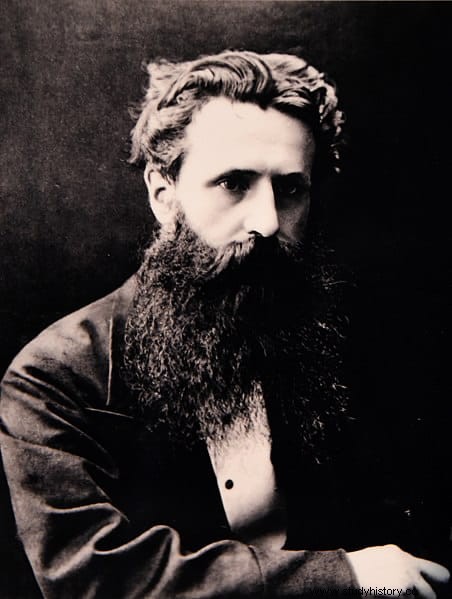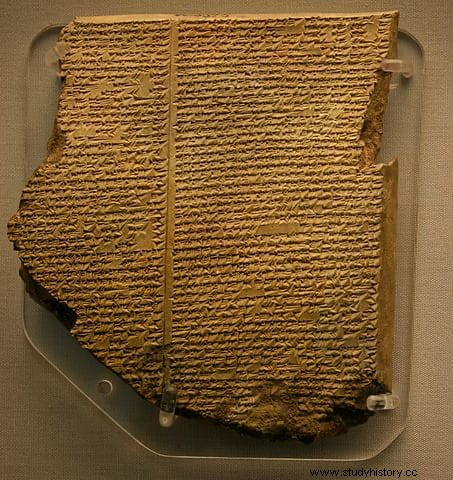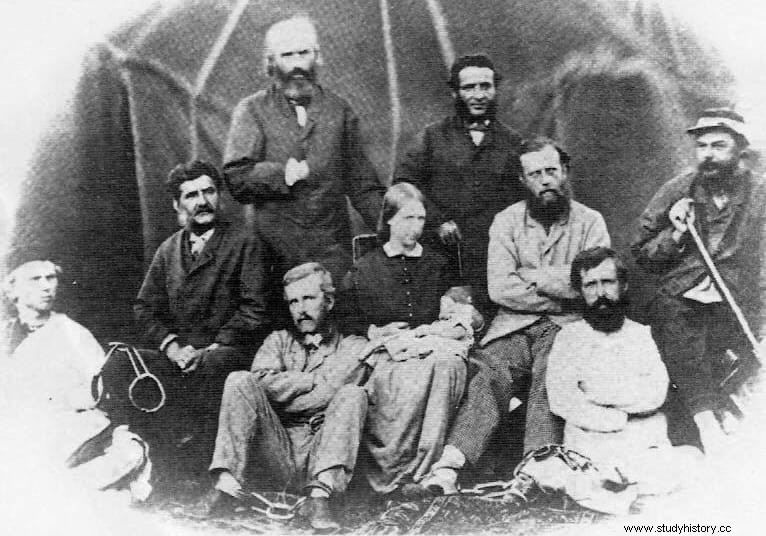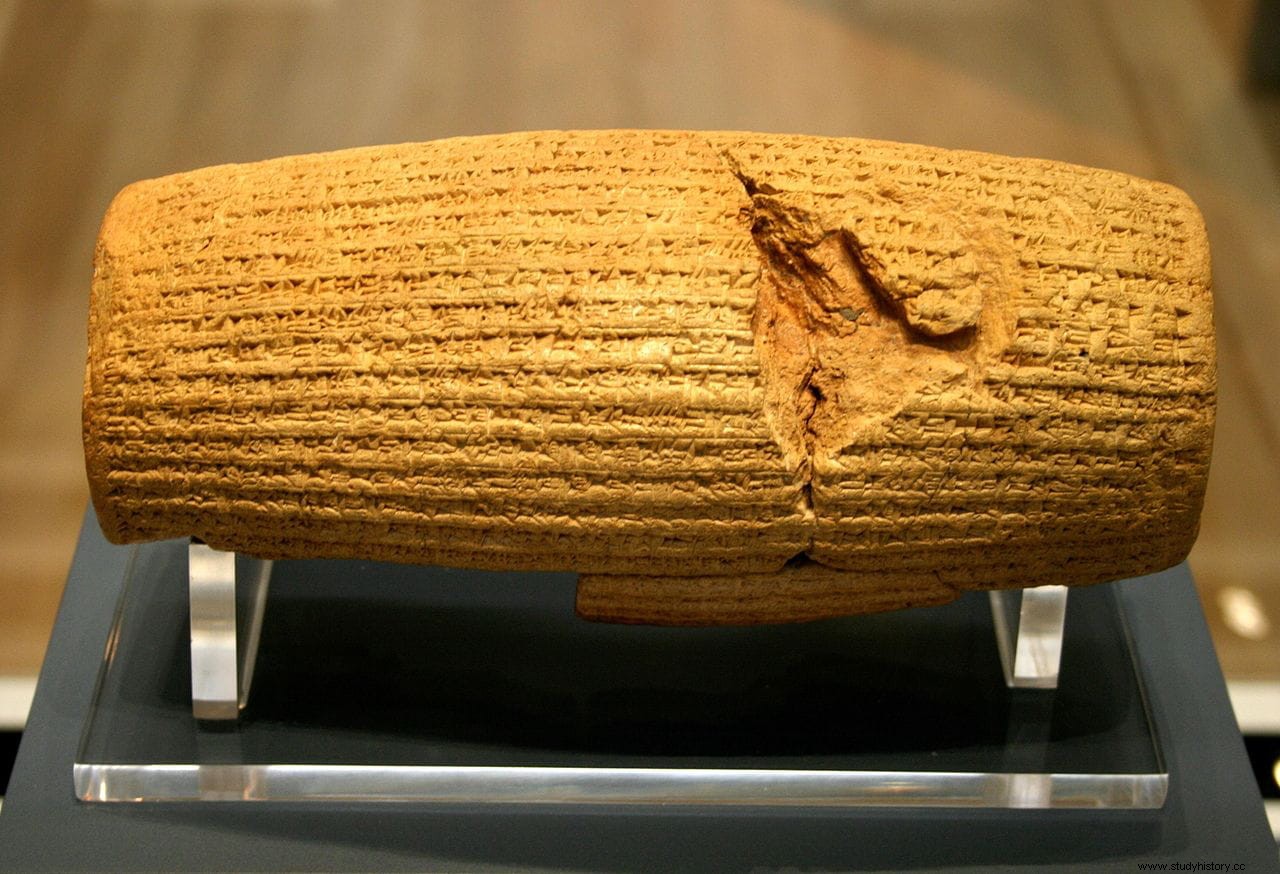Assyriology is a specialization of archeology focused on Mesopotamia, fundamentally, as its name indicates, on the Assyrian and Babylonian civilizations, but also the Sumerian, the Akkadian and, in general, all those that used cuneiform writing. It is a discipline that we immediately associate with nineteenth-century archaeologists with English, French or German surnames; however, one of its main representatives is little known because he is an Iraqi of Assyrian origin, although naturalized British:Hormuzd Rassam, whose merits include having discovered the tablets with the Poem of Gilgamesh .
It could be said that Assyriology took its first pre-scientific steps in the 12th century, at the hands of the Sephardic Jew Benjamin of Tudela, who was followed in the 16th century by the Roman musicologist Pietro della Valle, who identified the ruins of Nineveh and Babylon respectively.
In the second half of the eighteenth century, when archeology began to become the object of attention for enlightened scholars, the Danish mathematician Carsten Niebuhr and the French botanist André Michaux expanded the interest monopolized by Classical, Roman and Greek Antiquity, with their travels through lands Mesopotamian, which Abbé Beauchamp and Claudius James Rich began to excavate soon after.

Those first unearthed pieces gave the definitive impulse, especially when it was established that cuneiform signs were a type of writing. From there, archaeological missions followed one another, bringing to light the remains of cities such as Ur, Persepolis, Nimrud, Susa, Uruk, Nippur, Lagash or the aforementioned Nineveh and Babylon, among others. In the context of this exhuming fever, the life of Hormuzd Rassam is framed, which, as we said at the beginning, differed from his colleagues in the fact that he was not a Westerner but a native.
He was born in 1826 in Mosul, formerly Upper Mesopotamia, which today constitutes northern Iraq but at that time was part of the Ottoman Empire. On his paternal side he descended from representatives of the Chaldean Church, one of the twenty-four sui iuris (autonomous) that make up the Catholic Church, in this case following the Chaldean liturgical rite, which uses Eastern Syriac and Arabic as languages, and under the presidency of the Patriarch of Baghdad. On his mother's side he was descended from an illustrious lineage from Aleppo, which makes it easy to understand why Hormuzd's brother would manage to be appointed British vice-consul in his hometown.

The fraternal position allowed Hormuzd to meet Austen Henry Layard, a British diplomat from a Huguenot family whose traveling life had interested him in art, literature and archeology and who had already stopped in Persia on his first trip, where the ambassador Sir Stratford Canning he sent him in 1845 to explore Assyria.
That made him visit Mosul and there the meeting took place; Layard hired the 20-something Hormuzd as paymaster and they began digging at Kuyumjik and Nimrud. The work capacity of his new employee dazzled his boss, who when she finished, took him to England to provide him with the appropriate academic training.
The center chosen for this was the prestigious Magdalen College, of the University of Oxford, a posh site where several Nobel Prize winners and famous people such as Oscar Wilde, Edward VII and Andrew Lloyd-Weber, for example, also studied -or would do so.
Hormuzd remained there for a year and a half, until Layard, who after publishing the account of his experience under the title Nineveh and its remains he was stationed for a time in Constantinople as an attache to the embassy, he claimed him in 1849 for a second expedition.

The previous success, endorsed with the award of the gold medal of the Royal Geographical Society, allowed this time to have a larger budget, so the scope of the excavations was extended to Babylon; there, in the ruins of Sennacherib's palace, he discovered the library of that king's grandson, Ashurbanipal, in the form of thousands of cuneiform tablets, which he sent to England to add to the British Museum's Mesopotamian collection. The mission lasted until 1851, the year in which Layard published a new book recounting the adventure, Discoveries in the ruins of Nineveh and Babylon and he took advantage of the wind in favor to enter politics with the Liberal Party.
He left his pupil in charge of the archaeological work, considering him already fully trained. Thus, Hormuzd continued excavating for two more years at Nimrud and Nineveh hand in hand with William Kennett Loftus, another of Layard's patrons. The result of this was the discovery of more tablets; since the cuneiform writing had not yet been completely deciphered, they could not be identified.
The Englishman Henry Rawlinson and the Irishman Edward Hincks had been working on this task for more than a decade and had managed to translate two hundred signs; With the new consignment and the help of two other researchers, the German Julius Oppert and the also English William Henry Fox Talbot, the mystery would be unraveled, back in 1857.

Fifteen years later, Assyriologist George Smith would translate the eleventh of those tablets in question and read the results at the Society of Biblical Archaeology, before an audience that included Prime Minister William Gladstone himself. It was the oldest written narrative in the world, the Epic (or Poem) of Gilgamesh , an Akkadian narrative, in verse and based on five independent Sumerian poems, about the adventures of the heroic king of the same name.
Its importance was sublimated in nineteenth-century society with the fact that several stories from the biblical Genesis were inspired by that work -a previous millennium-, such as the Universal Flood, Noah's Ark (there called Ziusudra), the deception of the serpent in the tree or Creation.
Hormuzd returned to England in 1855 and, like his godfather -and through his mediation- parked Assyriology to start a diplomatic career, being assigned to the British consulate in Aden (city of present-day Yemen). There he worked to improve the empire's relations with the locals and, in 1866, he was sent to Abyssinia to negotiate with Emperor Theodore II for the release of some British citizens (the consul, his aides and several Protestant missionaries), taken hostage to demand military aid with which to deal with the widespread rebellions in the country.

Theodore II had unsuccessfully appealed to the Western powers to protect Christianity against the Islamic threat, hence he adopted such a drastic and desperate measure. The mission took more than a year due to Hormuzd's delay in reaching the capital, Magdala.
But, although it started in a promising way, then it went wrong and he himself ended up a prisoner. That mess was solved manu militari , with an epic punitive expedition led by Sir Robert Napier in 1868 that rescued the hostages.
Hormuzd described his personal odyssey in a memoir that he published the following year and did not prevent him from receiving harsh criticism in the press towards his ineffectiveness, but both the crown and the government defended his management and he was even compensated in cash for queen victoria.
It was the end of a stage whose culmination can be considered his marriage to an English opera singer named Anne Eliza Price, with whom he had two daughters, Theresa (1871) and Annie Ferida (1878). We speak of a new period because it seems that that Abyssinian failure made him see what his true vocation was:although he continued to collaborate with the government sporadically, he resumed his work as an archaeologist.

A good example of this complementarity were the four expeditions he carried out for the British Museum between 1877 and 1882, during the first of which he had to travel to Anatolia and Armenia to prepare a report on the impact of the Russo-Turkish War on the Greek and Armenian Christian communities. Something that he combined with excavations in Mesopotamia, where he made remarkable discoveries:in Nimrud, the temple of Ashurnasirpal II; at Nineveh, Ashurbanipal's cylinder; in Balawat, the gigantic bronze doors with bas-reliefs from the reigns of Ashurnasirpal II and Shalmaneser II; in Borsippa, the palace of Nebuchadnezzar II.
In Babylon he also had notable successes, such as locating the location of the famous Hanging Gardens of Semiramis or finding the cylinder of Cyrus II while working on the temple of Marduk. And in Sippar he found the solar temple, inside which the cylinder of Nabonidus and the stele of Nabu-apla-iddina were buried, together with some fifty thousand tablets with cuneiform writing.
A good part of these pieces were transferred to the British Museum thanks to the fact that its former boss, Layard, was an ambassador in Constantinople and negotiated it with the Ottoman sultan, under whose authority those territories were.

The arrival in England of that string of archaeological treasures gave Hormuzd international prestige, entering the aforementioned Royal Geographical Society and Society of Biblical Archaeology, as well as being awarded by the Accademia delle Scienze di Torino (Turin). However, his fame also generated the envy and cainisms typical of a discipline as little corporatist as archaeology.
Thus, the aforementioned Rawlinson claimed credit for a large part of the findings, arguing that when they were produced he was the British ambassador in Baghdad and was in charge of the excavations, attributing to Hormuzd a role of a mere operator on the ground. 
Layard defended him publicly and forcefully, but he still had the most bitter moments of his life to live through. It was in 1893, having already published five books, when the Egyptologist and orientalist philologist Ernest Wallis Budge, curator of the Department of Egyptian and Assyrian Antiquities of the British Museum, accused him of using his relatives from the Near East to traffic in antiquities and send them to England. only minor pieces, even though they still form the basis of the museum's Assyrian collection today.
And it is that when Hormuzd had replaced Layard in 1851, archaeologists were already beginning to excavate more slowly and scientifically, while he did it the old way, less carefully.
In any case, despite the fact that when he learned of Budge's complaints he was already sixty-seven years old, he sued him in court and won, although the sentence was somewhat bittersweet because it was ambiguous. He should wait a little longer for the academic world to fully recognize him; yes, he could hardly enjoy it because he died in 1910. Today, however, he is remembered as the pioneer that he was; Ashurbanipal's cylinder is officially called the Rassam Cylinder and the British Museum itself preserves his personal effects, including some as curious as the chains from his dungeon in Abyssinia.
